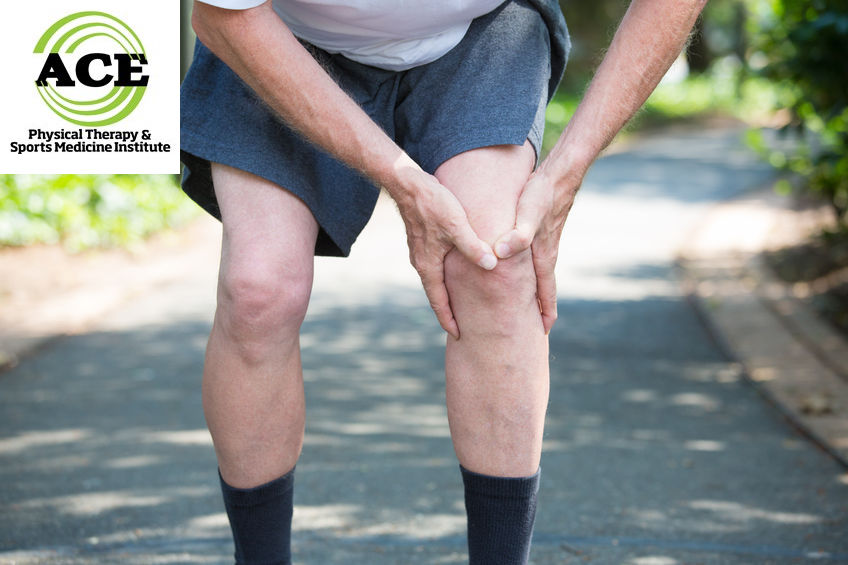CONCUSSION AND EARLY ONSET OF OSTEOARTHRITIS (OA)
 Concussion And Early Onset Of Osteoarthritis (OA) by ACE Physical Therapy and Sports Medicine Institute
Concussion And Early Onset Of Osteoarthritis (OA) by ACE Physical Therapy and Sports Medicine Institute
Tid Bits of Info.
- More than 3 million concussions are diagnosed every year in athletes.
- Concussions are damage to brain tissue and complete healing takes a very long time.
- Football and hockey have the highest incidence of concussion.
- OA has a higher incidence rate in retired athletes that suffered at least one concussion.
- Seek treatment from a Physical Therapist if you suffer a concussion to reduce the chances of suffering a musculoskeletal injury.
A sharp blow to the head can cause a concussion. When playing football or other high contact sports, some athletes suffer a concussion. A concussion may or may loss of consciousness, but it can cause confusion, headaches, dizziness, ringing in the ears, and more. In recent years, more and more people are realizing the potential long term impact of a concussion. One problem is that many athletes return to the field before recovering. The long term impact may include increased risk of musculoskeletal injuries and an early onset of OA. It is essential for healthcare providers to have better tools assessing concussed patients and a extensive re-education program for the neuromuscular system.
Currently, concussed athletes consult there is a team of healthcare professionals who examine the patient and determine status. The athlete’s acute symptoms are examined along with static balance and neurocognitive testing results to determine the severity of the concussion. The athlete’s rehabilitation process is progressed slowly and more intense, strenuous activities are introduced into their program to see how their bodies respond to the increased physical demands. During this rehabilitation process, testing the athlete’s symptoms, static balance and neurocognitive assessment is repeated as many times as needed until the concussed athlete returns to a pre-concussed status.
The concussed athlete appears to be more susceptible to musculoskeletal injuries when returning to participate in the sport. There is no way of knowing why this increased susceptibility occurs, but healthcare providers hypothesize that there might be a “lingering” reduction in motor planning resultant from damage to the motor cortex of a concussed athlete. The motor cortex is the area of the brain that plans, controls and executes all voluntary movements in the human body. There are providers that question if static balance testing gives enough information about the athlete’s true physical condition that would enable them to return to participation of their sport without a higher susceptibility to sustain a musculoskeletal injury.
Long term impact on joints is hard to determine but it appears that an athlete that suffered a concussion is more prone to developing OA than the non-concussed athlete in the same sport. One study referenced retired National Football League players and the results of the survey/study indicated that the football players that had suffered a concussion had a higher incidence of OA (not to any specific joint). When the player had suffered a traumatic injury to their leg and suffered one concussion they were 40% more likely to have OA and if they had more than one concussion the prevalence of OA was 70% higher. One theory was linked to gait changes that occur in concussed or previously concussed athletes. These gait changes might lead to abnormal stress and strain placed on the joints of the lower extremities and predispose them to OA later in the athlete’s life.
Healthcare providers who treat concussed athletes must train them to re-educate the nervous system. The loss of proprioception and kinesthetic awareness, even at a very low level, appears to pre-dispose the athlete acutely to musculoskeletal injuries and long term to OA. More studies have to be done on the overall effects of concussions on the musculoskeletal system but a good start would be to develop more comprehensive, dynamic tests for the athlete to perform prior to returning to action. Currently, the static tests do not appear to be sufficiently supplying enough information about the complete status of the concussed athlete.
Physical Therapists are learning more about treating concussed patients every day. The protocols that are being implemented are geared towards restoring normal neuromuscular control throughout the concussed patient’s body. The progression is slow and steady involves simple tasks that are easily assessed but not easily performed following a concussion. As the patient “heals,” the tasks that they are asked to perform become more advanced physically and a mental component is added to stimulate neurocognitive development.
Seeking help and treatment from a Physical Therapist does not require a doctor’s prescription. The patient should check with their insurance company because their policy might require a referral from their Primary Care Physician.
Concussions cause many problems for an athlete and unfortunately, it appears that the effects might be very long lasting. More studies performed to be able to predict the outcome of a concussed athlete; better testing methods prior to their return to action and complete and comprehensive re-education of the neuromuscular system are ways to achieve a positive outcome for the concussed athlete.
Read more articles on our main website blog at: ACE-pt.org/blog
Vist our main website at www.ACE-pt.org

